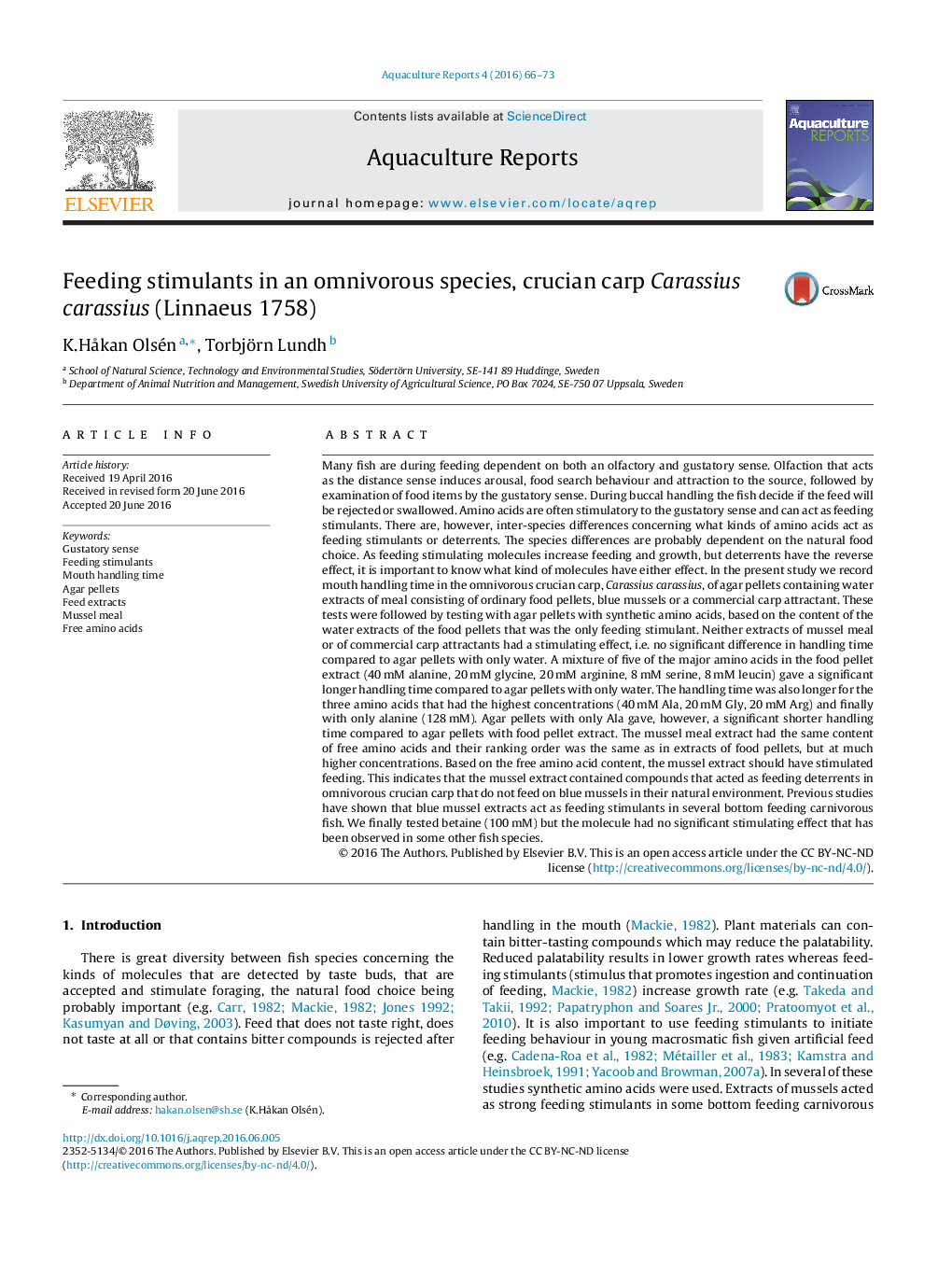| کد مقاله | کد نشریه | سال انتشار | مقاله انگلیسی | نسخه تمام متن |
|---|---|---|---|---|
| 4437946 | 1620276 | 2016 | 8 صفحه PDF | دانلود رایگان |

• Mouth handling time of agar pellets with stimulants were studied.
• Handling time was increased by extract of the ordinary feed pellets and synthetic amino acids.
• Blue mussel meal extract had no stimulating effect.
Many fish are during feeding dependent on both an olfactory and gustatory sense. Olfaction that acts as the distance sense induces arousal, food search behaviour and attraction to the source, followed by examination of food items by the gustatory sense. During buccal handling the fish decide if the feed will be rejected or swallowed. Amino acids are often stimulatory to the gustatory sense and can act as feeding stimulants. There are, however, inter-species differences concerning what kinds of amino acids act as feeding stimulants or deterrents. The species differences are probably dependent on the natural food choice. As feeding stimulating molecules increase feeding and growth, but deterrents have the reverse effect, it is important to know what kind of molecules have either effect. In the present study we record mouth handling time in the omnivorous crucian carp, Carassius carassius, of agar pellets containing water extracts of meal consisting of ordinary food pellets, blue mussels or a commercial carp attractant. These tests were followed by testing with agar pellets with synthetic amino acids, based on the content of the water extracts of the food pellets that was the only feeding stimulant. Neither extracts of mussel meal or of commercial carp attractants had a stimulating effect, i.e. no significant difference in handling time compared to agar pellets with only water. A mixture of five of the major amino acids in the food pellet extract (40 mM alanine, 20 mM glycine, 20 mM arginine, 8 mM serine, 8 mM leucin) gave a significant longer handling time compared to agar pellets with only water. The handling time was also longer for the three amino acids that had the highest concentrations (40 mM Ala, 20 mM Gly, 20 mM Arg) and finally with only alanine (128 mM). Agar pellets with only Ala gave, however, a significant shorter handling time compared to agar pellets with food pellet extract. The mussel meal extract had the same content of free amino acids and their ranking order was the same as in extracts of food pellets, but at much higher concentrations. Based on the free amino acid content, the mussel extract should have stimulated feeding. This indicates that the mussel extract contained compounds that acted as feeding deterrents in omnivorous crucian carp that do not feed on blue mussels in their natural environment. Previous studies have shown that blue mussel extracts act as feeding stimulants in several bottom feeding carnivorous fish. We finally tested betaine (100 mM) but the molecule had no significant stimulating effect that has been observed in some other fish species.
Journal: Aquaculture Reports - Volume 4, November 2016, Pages 66–73